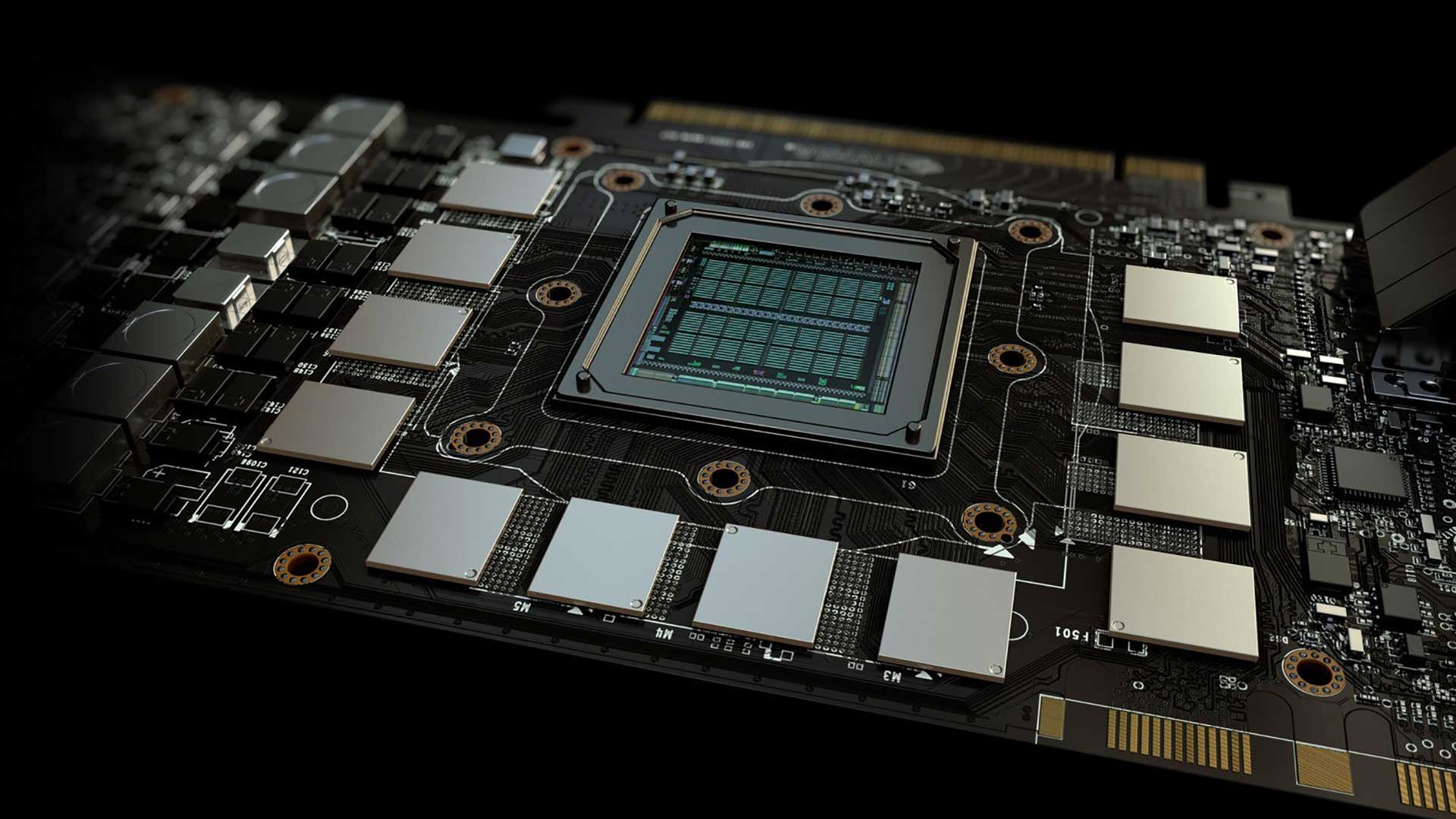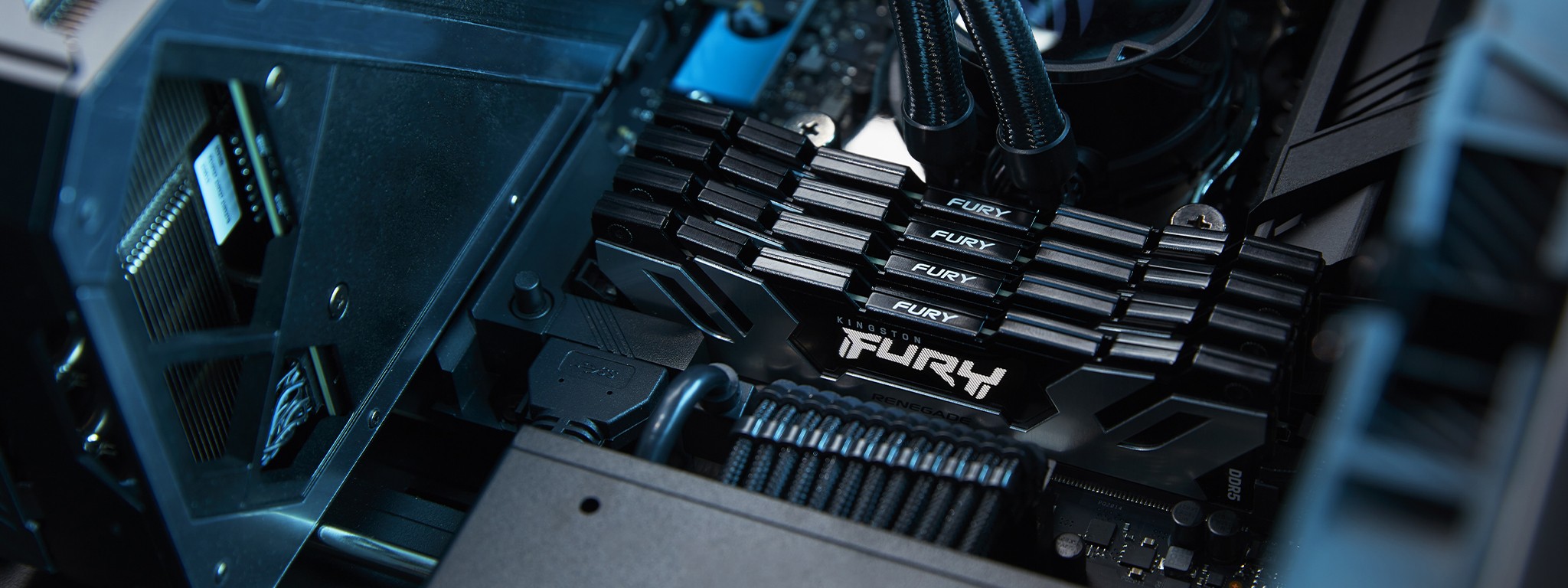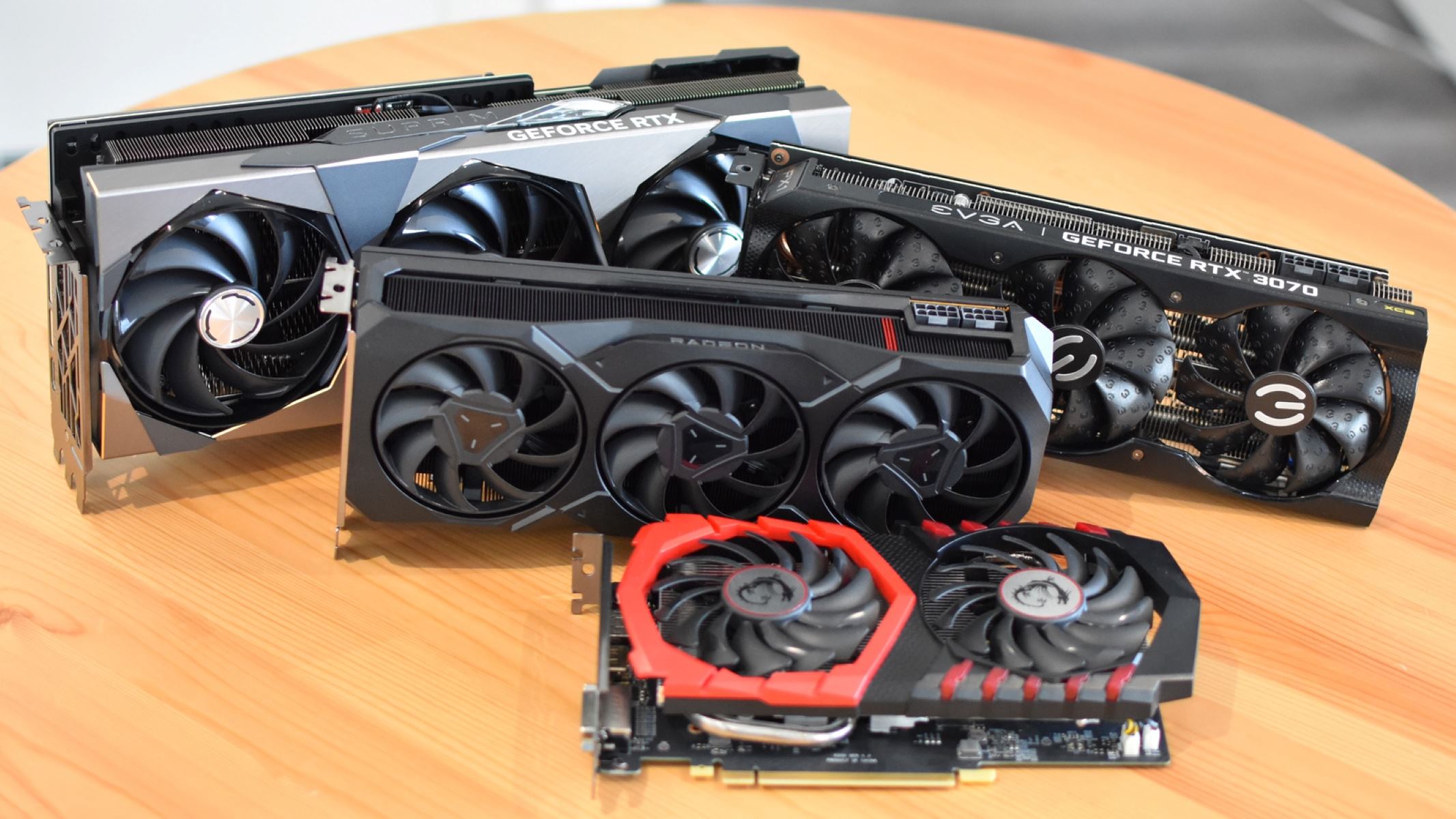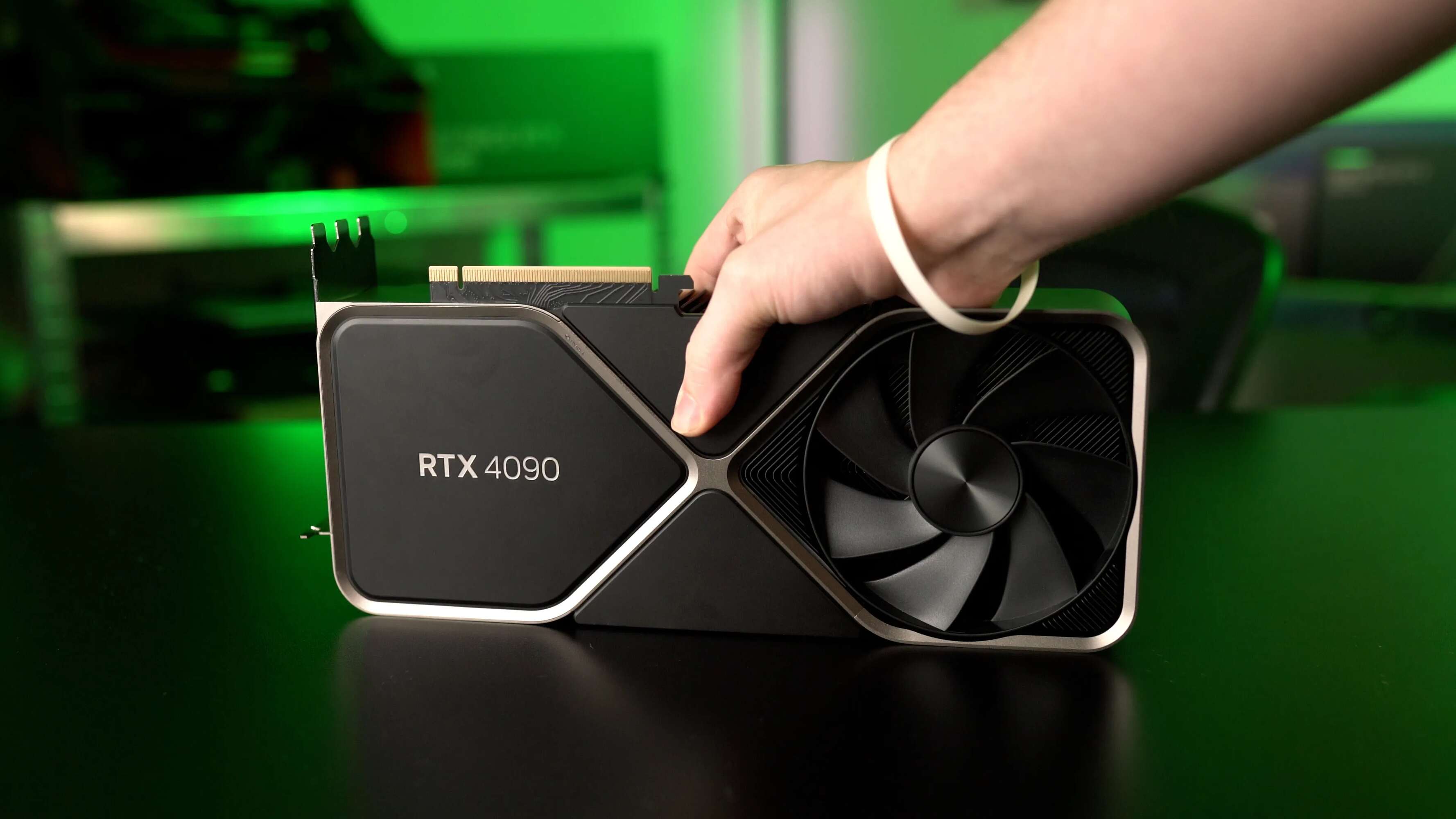Introduction
A graphics card is an essential component of any computer system, especially for gamers, graphic designers, or anyone working with multimedia-intensive applications. When it comes to buying a new graphics card or upgrading your existing one, it’s important to know how much memory (or VRAM) it has.
Graphics card memory, measured in gigabytes (GB), plays a vital role in determining the performance and capability of your graphics card. It directly affects how well your system can render high-resolution images, handle complex visual effects, and run graphics-intensive games or software.
Knowing the amount of memory your graphics card has is useful for various reasons. It helps you determine if your card meets the requirements of new games or software that you want to run. It also gives you insight into the potential limits of your card when it comes to multitasking or running multiple monitors.
In this guide, we will explore several methods to find out how many gigabytes (GB) of memory your graphics card has. Whether you are a Windows user or a Mac user, we will cover methods that work on both operating systems. From checking manufacturer specifications to using third-party software, we’ve got you covered.
By the end of this guide, you’ll have the knowledge and tools necessary to easily discover the memory capacity of your graphics card, allowing you to make informed decisions when it comes to upgrading or optimizing your system’s graphical capabilities. Let’s dive in and explore the various methods available to find out how many GB your graphics card has!
Understanding Graphics Card Memory
Graphics card memory, also known as Video Random Access Memory (VRAM), is a type of memory specifically designed for graphics-intensive tasks. It acts as a temporary storage space for the graphics card to store and process data related to rendering images, textures, and other visual elements on your computer screen.
The amount of memory available on a graphics card directly impacts its performance and determines how well it can handle complex graphics and visual effects. The more memory the card has, the more information it can store and process, resulting in smoother gameplay, faster rendering times, and improved overall visual quality.
Graphics card memory is different from the system memory (RAM) in your computer. While RAM is used for general computing tasks, graphics card memory is specifically dedicated to handling the heavy workload of rendering graphics and visuals.
Graphics cards typically have varying amounts of memory, ranging from 2GB to 24GB or even more in high-end models. The amount of memory you need depends on the type of tasks you perform. If you mainly use your computer for web browsing, word processing, and light multimedia, a lower amount of memory will suffice. However, if you are a gamer or a professional working with graphic design, video editing, or 3D modeling, you will benefit from having more memory on your graphics card.
It’s worth noting that the amount of graphics card memory required also depends on the resolution and detail settings you use in games or applications. Higher resolutions and detail levels require more memory to store and manipulate the additional visual information.
Understanding the importance of graphics card memory allows you to make informed decisions when it comes to choosing a graphics card or upgrading your existing one. By knowing the amount of memory your card has, you’ll be better equipped to select the right hardware for your specific needs and optimize your system’s graphical performance.
Method 1: Checking the Manufacturer’s Specifications
One of the easiest and most reliable ways to find out how many gigabytes (GB) of memory your graphics card has is by checking the manufacturer’s specifications. Every graphics card has a model number or name, which you can use to search for detailed information on the manufacturer’s website.
Here’s how you can use this method:
- Locate the model number or name of your graphics card. This information can usually be found on the physical card itself or in your system’s documentation.
- Visit the website of the graphics card manufacturer. Popular manufacturers include NVIDIA, AMD, and Intel, among others.
- Find the support or product section on the manufacturer’s website. Look for a search bar or a list of product categories.
- Enter the model number or name of your graphics card in the search bar or select the appropriate category.
- Navigate to the product page or specifications page of your graphics card model.
- On the product page, you should find detailed information about your graphics card, including the amount of memory (in GB) it has. It might be listed under specifications, features, or details.
If you are unable to locate the manufacturer’s website or find information about your specific graphics card model, you can also try searching for the model number or name along with keywords like “graphics card specs” or “graphics card memory” in your preferred search engine. This might lead you to other reliable sources, such as review websites or forums, where users or experts discuss the specifications of various graphics cards.
Checking the manufacturer’s specifications is a straightforward method that provides accurate and reliable information about the memory capacity of your graphics card. It’s a good starting point when you want to gather details about your card before considering other methods.
Method 2: Using Device Manager (Windows)
If you are using a Windows operating system, you can easily find out the amount of memory (in gigabytes, GB) your graphics card has by using the built-in Device Manager. Here’s how:
- Open the Start menu and search for “Device Manager.” Click on the top result to launch the Device Manager window.
- In the Device Manager, locate and expand the “Display adapters” category. This category lists all the graphics cards installed on your system.
- Under the “Display adapters” category, you will see the name of your graphics card(s). Right-click on the graphics card you want to check and select “Properties.”
- In the Properties window, navigate to the “Adapter” tab.
- Under the “Adapter” tab, you will find the “Adapter Information,” which includes information about your graphics card, such as the name, manufacturer, and the total available graphics memory.
- The “Total Available Graphics Memory” section displays the amount of memory your graphics card has. It is usually listed in megabytes (MB) or gigabytes (GB).
Note that the total available graphics memory includes not only the dedicated video memory (VRAM) but also any shared system memory that the graphics card can access. The dedicated VRAM is what you should primarily focus on to determine the actual amount of memory your graphics card has.
Using Device Manager is a quick and convenient method to check the memory capacity of your graphics card if you are using a Windows computer. It provides you with the necessary information without the need for additional software or manual searches. Now that you know how to check the memory using Device Manager, you can proceed to the next method if you are using a different operating system.
Method 3: Using System Profiler (Mac)
If you are using a Mac computer, you can find out the amount of memory (in gigabytes, GB) your graphics card has by using the built-in System Profiler utility. Here’s how:
- Click on the Apple menu in the top-left corner of your screen and select “About This Mac.”
- In the “About This Mac” window, click on the “System Report” or “System Profiler” button. This will open the System Profiler utility.
- In the System Profiler, navigate to the “Graphics/Displays” section. This section provides detailed information about the graphics cards installed on your Mac.
- Under the “Graphics/Displays” section, you will see the name of your graphics card(s) along with other relevant information.
- Select the specific graphics card you want to check, and you will find detailed information about it in the pane on the right.
- Look for the “VRAM (Total)” or “VRAM (Dynamic, Max)” field. This field displays the amount of memory your graphics card has. It is usually listed in megabytes (MB) or gigabytes (GB).
The VRAM field shows the dedicated video memory (VRAM) of your graphics card, which is the main focus when determining the memory capacity. The VRAM is the memory used by the graphics card to store and process graphical data.
Using the System Profiler utility is a convenient way to check the memory capacity of your graphics card on a Mac. It provides you with detailed information about the graphics card and its VRAM without the need for external software or manual searches. Now that you know how to check the memory using System Profiler, you can proceed to the next method if you need to check on a different operating system.
Method 4: Using GPU-Z
If you want to gather more detailed information about your graphics card, including the memory capacity, you can use a third-party software called GPU-Z. GPU-Z is a free utility that provides comprehensive information about your graphics card, such as clock speeds, temperature, and, most importantly, the memory size.
Follow these steps to find out the memory capacity of your graphics card using GPU-Z:
- Go to the GPU-Z website (https://www.techpowerup.com/gpuz/) and download the latest version of GPU-Z.
- Install GPU-Z on your computer by running the downloaded file.
- Launch GPU-Z by double-clicking the desktop shortcut or searching for it in the Start menu.
- Once GPU-Z is open, it will display detailed information about your graphics card.
- Under the “Graphics Card” tab, you will find various details about your graphics card, including the memory size.
- Look for the “Memory Size” field, which indicates the capacity of your graphics card’s memory. It is usually listed in gigabytes (GB).
GPU-Z provides real-time information about your graphics card and is a popular tool among enthusiasts, gamers, and professionals. It not only offers accurate information about the memory size but also provides additional technical details that can be helpful for system optimization and troubleshooting.
Using GPU-Z is a great way to get in-depth information about your graphics card, including the memory capacity. It is particularly useful if you need to know specific details about your graphics card or if you want to monitor its performance over time. Now that you are aware of the GPU-Z method, you can proceed to the next method if you have other avenues to explore for finding the memory capacity of your graphics card.
Method 5: Checking Graphics Card Box or Documentation
If you still have the original box or documentation that came with your graphics card, it can be a valuable resource for finding out the memory capacity. Manufacturers often include the specifications of the graphics card on the packaging or in the accompanying documentation.
Here are the steps to check the memory capacity using the graphics card box or documentation:
- Locate the original box or any documentation that came with your graphics card.
- Inspect the box or documentation for any labels, stickers, or descriptions that provide information about the card’s specifications.
- Look for details related to the memory capacity, which is typically listed in gigabytes (GB).
- If you find multiple graphics cards listed (in the case of dual graphics card setups), ensure that you identify the appropriate card and its memory capacity.
Checking the graphics card box or documentation is a straightforward method to quickly determine the memory capacity. It eliminates the need for additional software or online searches and provides you with the accurate specifications directly from the manufacturer.
If you no longer have the box or documentation, or if the information is not clearly stated, you can explore the next method to find out the memory capacity of your graphics card.
Method 6: Searching Online Retailers or Forums
If you’re unable to find the memory capacity of your graphics card using the previous methods, another option is to search online retailers or forums for information. Online retailers often provide detailed specifications of the products they sell, including graphics cards. Similarly, forums dedicated to computer hardware or gaming discussions can be a valuable resource where users share their experiences and knowledge.
Follow these steps to find out the memory capacity of your graphics card by searching online retailers or forums:
- Open your preferred web browser and go to popular online retailers, such as Amazon, Newegg, or Best Buy.
- Search for your specific graphics card model using the search or browse functionality of the website.
- Navigate to the product page of your graphics card.
- Look for the specifications section or tab, where you should find detailed information, including the memory capacity of the graphics card.
- If necessary, you can also explore customer reviews or questions and answers sections, which may contain additional information about the card’s memory.
- Additionally, you can search for forums or discussion boards dedicated to computer hardware or gaming.
- Search for threads or posts related to your graphics card model or ask a question to the community if the information you need is not readily available.
- Read through the discussions to find relevant information shared by users who may have firsthand experience with the same graphics card.
Searching online retailers or forums can be a useful alternative for finding the memory capacity of your graphics card, especially if other methods have been unsuccessful. These online platforms can provide insights from both the manufacturer’s specifications and real-world user experiences.
By utilizing this method, you can gather valuable information about your graphics card’s memory and gain additional insights into its performance and compatibility. Remember to cross-reference the information from multiple sources to confirm accuracy.
Conclusion
Knowing the amount of memory your graphics card has is essential for optimizing your system’s graphical performance and ensuring compatibility with graphics-intensive applications and games. We explored several methods to find out how many gigabytes (GB) of memory your graphics card has, catering to different operating systems and preferences.
By checking the manufacturer’s specifications, you can obtain accurate information about your graphics card’s memory capacity. This method is reliable and serves as a good starting point for gathering information. Additionally, using the built-in tools like Device Manager on Windows or System Profiler on Mac allows for a quick and convenient way to find the memory size.
If you desire more detailed information about your graphics card, tools like GPU-Z provide comprehensive data about the card’s memory capacity and other technical specifications.
Alternatively, by referring to the graphics card box or documentation, you can find specific details about the memory capacity and other related specifications provided by the manufacturer.
Lastly, searching online retailers or forums can provide invaluable insights from retailers’ product listings or user discussions, offering real-world experiences and additional information.
With these methods at your disposal, you can easily find out the memory capacity of your graphics card and make informed decisions regarding system upgrades, optimization, or compatibility with software and games.
Remember to cross-reference information from multiple sources to ensure accuracy and to consider other factors such as resolution, detail settings, and the specific requirements of your applications when determining the adequacy of your graphics card’s memory.
By staying informed about your graphics card’s memory capacity, you are better equipped to maximize your system’s graphical capabilities and enhance your overall computing experience.

























